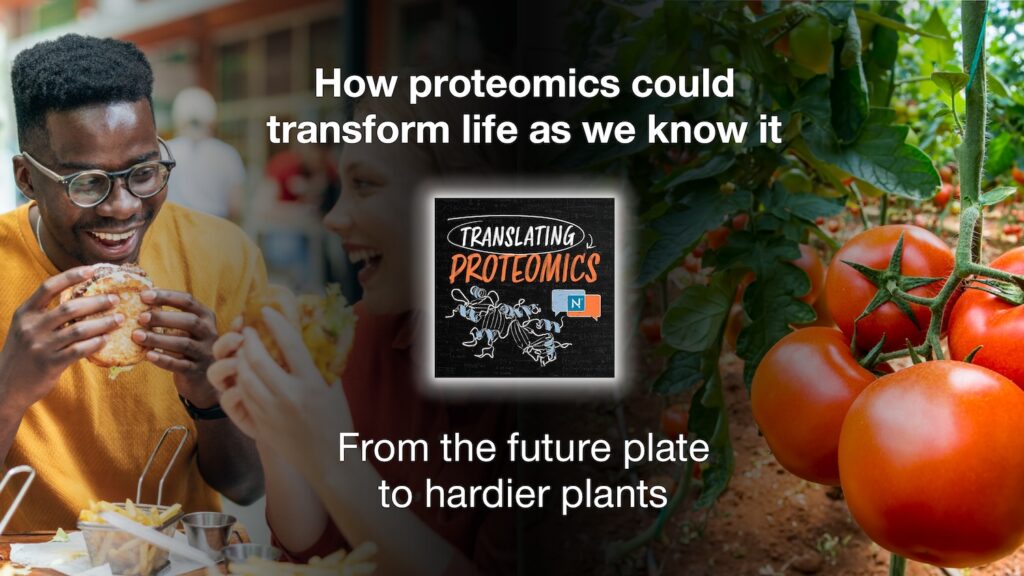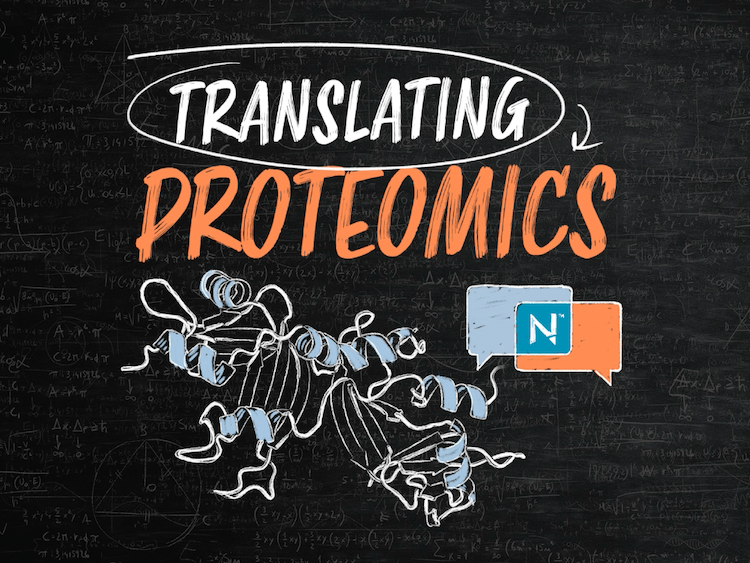
From the future plate to hardier plants – How proteomics could transform life as we know it
Nautilus Biotechnology
September 3, 2024

For a peek at the ways proteomics could reshape the world, consider the humble hamburger. Companies like Impossible Foods are recreating the taste, smell, and texture of a well-sizzled beef patty using plant-based ingredients. Doing so requires understanding exactly what makes a hamburger a hamburger, down to the molecular level. For that, they’ll need to know the secrets of the hamburger proteome, the specific kinds and amounts of proteins that add up to a juicy burger.
The field of proteomics today is probably up to the task, says Parag Mallick, Nautilus Co-Founder and Chief Scientist, on the second episode of our Translating Proteomics podcast. Studying the hamburger proteome and emulating it might be the key to the perfect vegan burger.
Proteomics is about far more than making a great hamburger, of course, but the same kind of innovations that unlock a sizzling patty could also create new therapeutics, hardier plants, better pesticides, and even play into how we fight climate change.
In the case of hamburgers, recreating their qualities in a meatless patty means studying not just single proteins, but the full range of the hamburger proteome, and how it changes as a patty cooks. Similarly, understanding the dynamics of plant proteomes as they deal with drought could help scientists develop more drought-resistant plant strains, and even reveal ways to alter biological pathways to create things like trees that absorb more carbon.
On the Translating Proteomics podcast, Parag and Andreas Huhmer, Senior Director of Scientific Affairs and Alliance Management at Nautilus, discuss some of the most exciting potential applications of proteomics in biology and agriculture, from hamburgers to carbon-fixing trees. All of this may be made possible with new generations of proteomics tools, like the NautilusTM Proteome Analysis Platform, that can capture the full diversity and dynamic range of the proteome and give scientists access to information they’ve never had before.
Protein networks are the key
Networks of proteins working together, not individual proteins themselves, often matter most. These dynamic networks carry out many biological processes, and they can be far more complex than is apparent from the genome or transcriptome. With new knowledge and tools, the importance of these networks is coming into focus, and revealing ways we can adapt them to our advantage.
Parag points to groundbreaking work from the lab of Matthias Selbach at the Max Delbrück Center for Molecular Medicine in Germany. There, in a series of papers, researchers showed proteome dynamics are influenced by but distinct from transcriptome dynamics. The takeaway is simple: to understand biology, we need to look to the proteome.
“Those papers helped really explain the handshake between the transcriptome and the proteome, and how the proteome is able to accomplish so much and so differently than the transcriptome,” Mallick says.
Watch Parag and Andreas discuss Parag’s favorite application of proteomics.
Nonetheless, capturing the scale and diversity of the proteome is difficult with existing technologies like mass spectrometry. Researchers can get a taste of the complexity the proteome brings to biology, but it takes an enormous amount of work to explore that complexity comprehensively. In the near future, with new technologies that can analyze entire proteomes at once and capture changes over time, the dynamics of the proteome will be far easier to see. That will enable a wide variety of applications, many of which we can’t imagine at the moment. On Translating Proteomics, Parag and Andreas give a few glimpses at what they see in the future of proteomics and we capture some of them below.
Building better plants with proteomics
Andreas sees the potential to take new insights into proteomic complexity and dynamism and apply them to the world of plant biology, where large datasets would let biologists attack problems they couldn’t before. “I think plant biology is highly neglected, not only from our funding agencies but also in general in the way that biologists study it,” he says.
Bringing accessible proteomics to the world of agriculture could enable scientists to compare the entire proteomes of different strains of soybean or tomato and to watch how they respond to drought, Parag says. With that knowledge in hand, farmers could breed plants more suited to withstand climate change. In fact, that work is already beginning: see research from Liu et al. 2023 assessing the proteomes of tomato plants in drought conditions.
In the future, scientists may be able to go even further by designing entirely new proteins that alter the dynamics of protein networks in previously impossible ways. This kind of work is in preliminary stages right now, but Parag says the possibilities are enticing, and potentially revolutionary.
“Can we build a better tree with enzymatic pathways that are wired to absorb much more carbon?” he says. “Are there bacteria we can engineer to convert nuclear waste to something less toxic?”
Watch Parag discusses 3 big buckets of exciting proteomics applications.
Pairing a deeper understanding of protein networks with designer proteins makes it possible to imagine even more futuristic possibilities. Researchers are using custom-made DNA today to design nanostructures for therapeutics and more. Doing the same with proteins opens the door to more dynamic custom-made biological systems. As an example, Andreas envisions strategies for controlling agricultural pests that rely on monitoring biological pathways to know when a species becomes pesticide resistant.
“You could think of a self-adapting pest control system that senses that the pest it’s trying to kill has evaded the defense mechanisms, and the biological system is completely able to adapt,” he says.
New proteomics tools need to be highly accessible
A plethora of proteomics-fueled advances are just over the horizon. So, what do we need to get there? Many factors will help bring the proteomics revolution to fruition, but Andreas says one stands out clearly.
“What we need is for these measurements to be incredibly cheap, incredibly accessible,” he says. More data on the proteomes of hamburgers, tomato plants, and more will begin to fill in the missing details about how these biological systems work. With better tools for gathering proteomic data, we may soon get to the scale necessary to truly understand what makes a hamburger a hamburger.
“We need highly accessible, super cheap, powerful protein detection technologies,” Andreas says. We hope the Nautilus Proteome Analysis Platform can help us get there and put the power of the proteome in the hands of researchers everywhere. Subscribe to the Nautilus Blog to learn more about the coming proteomics revolution.
Watch Parag and Andreas discuss what’s needed to bring the applications of proteomics to fruition.
MORE ARTICLES

